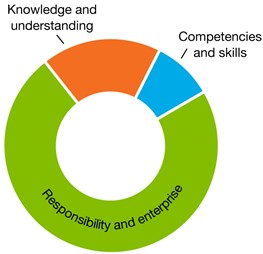Explore content
Typically, by the end of Year 8, students:
Understand computer mediated communications
understand that there are various methods of collaboration through computer mediated communications that vary in form and control
Identify the impacts of ICT in society
explain the benefits and risks of the use of ICT for particular people in work and home environments
Typically, by the end of Year 8, students:
Select and evaluate data and information
assess the suitability of data or information using appropriate own criteria
Typically, by the end of Year 8, students:
Recognise intellectual property
apply practices that comply with legal obligations regarding the ownership and use of digital products resources
Apply digital information security practices
independently apply strategies for determining the appropriate type of digital information suited to the location of storage and adequate security for online environments
Apply personal security protocols
identify and value the rights to identity, privacy and emotional safety for themselves and others when using ICT and apply generally accepted social protocols when using ICT to collaborate with local and global communities
Define and plan information searches
use a range of ICT to analyse information in terms of implicit patterns and structures as a basis to plan an information search or generation
Locate, generate and access data and information
locate, retrieve or generate information using search facilities and organise information in meaningful ways
Generate ideas, plans and processes
use appropriate ICT to collaboratively generate ideas and develop plans
Generate solutions to challenges and learning area tasks
design and modify simple digital solutions, or multimodal creative outputs or data transformations for particular audiences and purposes following recognised conventions
Collaborate, share and exchange
select and use appropriate ICT tools safely to lead groups in sharing and exchanging information, and taking part in online projects or active collaborations with appropriate global audiences


